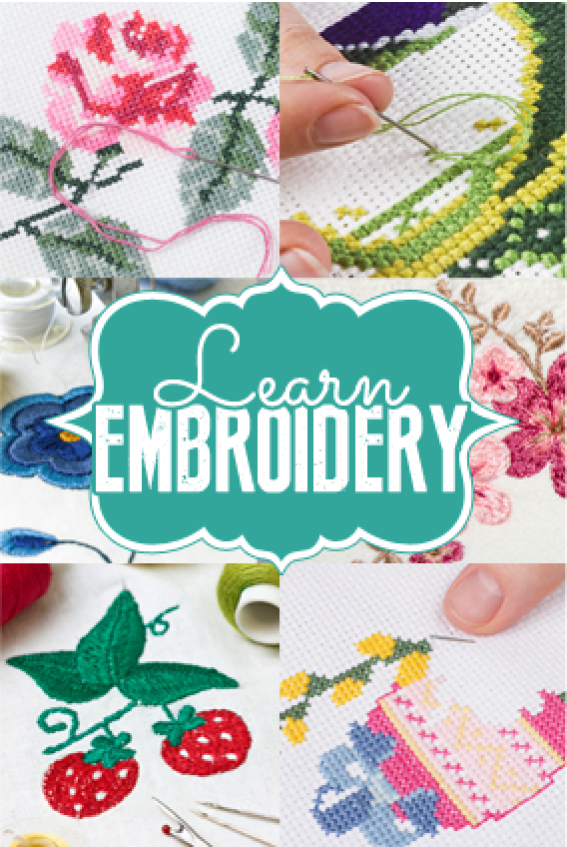
Learn embroidery
Want to learn the art of decorative embroidery? We have everything you need to know to create pieces you'll be proud of.
How to Cross Stitch



Bring the needle out at A and make a diagonal stitch to B, an equal distance up and to the left of A. Bring the needle out at C, directly below B and level with A.
Make a second diagonal stitch to D, immediately above A and level with B. To work a second adjoining cross, bring the needle out at C again.
Work cross stitches in the same way across the row. Complete all the A to B stitches first and then go back along the row doing C to D for a neater finish.
How to transfer embroidery designs
When using a light-coloured fabric like this, you should be able to place the material on top of the printed design and trace it directly onto the fabric. It may be necessary to trace or photocopy the design onto paper, tape the paper to a window, or a light box if you have one, and position the fabric right side up on top of the design. Tape the edges to prevent it moving, then trace the design onto the fabric. If you cannot see the motif clearly through the fabric, go over the back of the traced or photocopied design with a transfer pen or pencil. Position the transfer on the fabric and press with a hot dry iron for about 10 seconds, until the design has been transferred.
How to transfer a motif
Method one
Trace or photocopy the pattern sheet onto thin layout paper or typing paper (not tracing paper). Turn the paper over and work over the design with a transfer pen or pencil. Position the motif on your fabric and press with a hot, dry iron (no steam) for about 10 seconds, until the design has transferred.Method two
Trace or photocopy the motif from the pattern sheet onto paper (any type). Tape the paper to a light box or window pane. Position the fabric right side up on the design and tape edges to prevent it moving, then trace the design onto the fabric using an erasable pen or pencil.
How to lazy daisy stitch
Lazy daisy stitch is a variation on the chain stitch. Work a normal chain stitch, but then take a further small securing stitch at the tip of each chain. Work five stitches in a circle to make a little daisy-like flower.
How to couch stitch
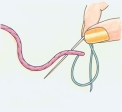
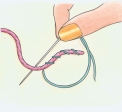
Secure the thread at the back of the work and bring the needle up to the surface at the start of the design. Place a thread or cord along the sewing line and take the needle over it and down through the fabric on the other side.
Continue making stitches over the cord to secure in place along the length.
TIP: when working with threads or cords that have an obvious twist to the ply, use diagonal stitches at the same angle so they will be concealed by the cord.
How to make a french knot
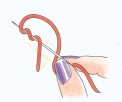
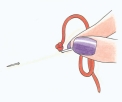
Bring the thread to the surface at the position for the knot. Wrap the thread around the needle tip twice and take the needle back through the fabric where it came up.
Ease the knot on to the surface of the fabric, holding it steady whilst pulling the needle through to the wrong side. Stitch to secure or return to the surface for next French knot.
How to sew individual sequins
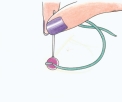
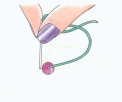
Secure the thread and bring to the surface at the position of the sequin. Bring the needle through the hole in the sequin and across the surface, bringing it down through the fabric at the sequin edge.
Bring the needle back up through the the hole in the sequin and return it through the fabric at a different point on the edge
Repeat the stitching until the sequin is secured as desired.
How to sew linear sequins
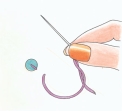
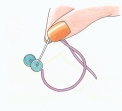
Secure the thread and bring to the surface at the position of the sequin. Bring the needle through the hole in the sequin and across the surface, bringing it down through the fabric at the sequin edge where the next sequin will be added.
Bring the needle back up along the stitching line half a sequin width along. Place the next sequin to overlap the first, take the thread over the second sequin and back down through the hole.
Pull the thread and adjust so that the sequin is placed half over the previous one. Repeat stitching and threading on sequins, each half covering the one before.
How to stitch with beads


Secure the thread in the position of the first bead. Pass the needle through the hole in the bead and back down through the fabric underneath the bead.
For individual beads, secure the threads on the wrong side. For rows or clusters, bring the needle up through to the surface at the position for the next bead.
How to sew with linear beads
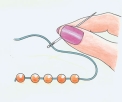
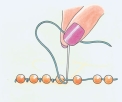
Bring the thread to the surface of the fabrics at the start point of the stitching line. Feed the beads onto the length of thread and lay it on to the surface of the fabric.
Using a second thread, work from one end to the other taking the sewing thread over the thread between the beads and down through the other side to secure. Repeat for the entire length and fasten off on the wrong side.










































